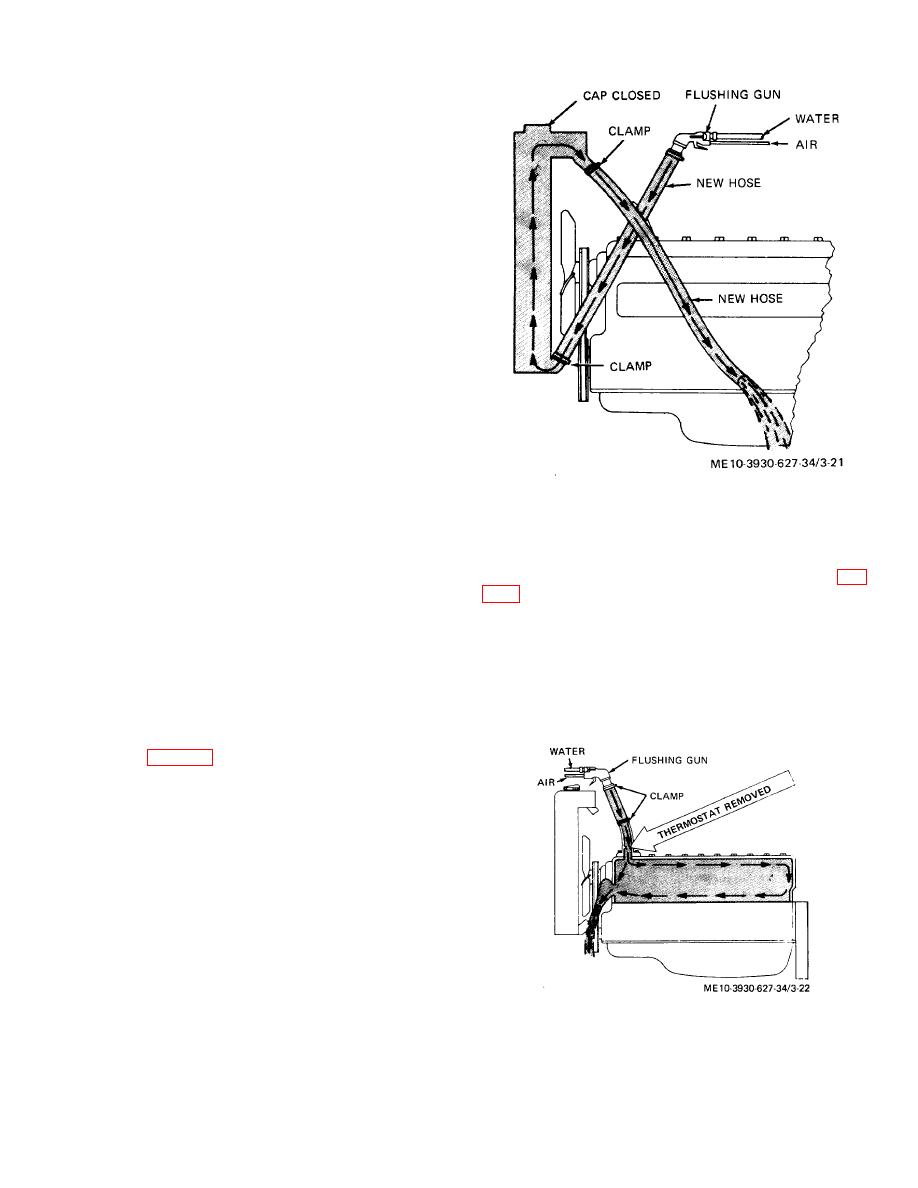 |
|||
|
|
|||
|
|
|||
| ||||||||||
|
|
 3-16. Water Pump,
Removal,
Inspection
and
Installation
3-17. Cooling System Maintenance
a. General Information. Engines are shipped with a
cooling system protector pellet in the water outlet
header, which should not be removed, but allowed to
dissolve in the cooling system. This pellet is a film
covered cartridge, all of which completely dissolves in
the cooling water with proven results as a water
conditioner and rust inhibitor. It can be used with all
types of antifreeze during cold weather operation. The
appearance of rust in the radiator or coolant is a warning
that the corrosion inhibitor has lost its effectiveness and
the system should be cleaned as explained below before
adding fresh coolant. In some areas, the chemical
content of the water is such, that even the best of rust
inhibitors will not protect the cooling system from the
formation of rust and scale. There are instances where
this corrosive element has eaten holes through cast iron
parts such as water pump impellers and bodies. This
condition is caused by electrolysis taking place in the
parts involved. Where these conditions exist, water
filters should be incorporated in the assembly to remove
Figure 3-21. Reverse flushing radiator.
these troublesome elements and offset the electrolytic
action. Whenever a cooling system is badly rust
c. Engine Reverse Flushing.
clogged as indicated by overflow losses or abnormally
(1) Remove the thermostat.
high operating temperatures, corrective cleaning by
(2) Clamp the flushing gun in the upper hose (fig.
reverse flow flushing will most effectively remove the
heavy deposits of sludge, rust and scale. The reverse
(3) Partly close the water pump opening to fill the
flow flushing should be performed immediately after
engine jacket with water before applying the air.
draining the cleaning solution and it is advisable to flush
(4) Follow the same procedure outlined above for
the radiator first, allowing the engine to cool as much as
the radiator by alternately filling the water jacket with
possible.
water and blowing it out with air (80 pounds pressure)
b. Radiator Reverse Flushing.
until the flushing stream is clear.
(1) Disconnect the hoses at the engine.
(2) Put radiator cap on tight.
(3) Clamp the flushing gun in the lower hose with
a hose clamp (fig. 3-21).
(4) Turn on the water and let it fill the radiator.
(5) Apply air pressure gradually to avoid radiator
damage.
(6) Shut off the air, again fill the radiator with
water and apply air pressure. Repeat until the flushing
stream runs out clear.
Figure 3-22. Reverse flushing engine.
3-16
|
|
Privacy Statement - Press Release - Copyright Information. - Contact Us |